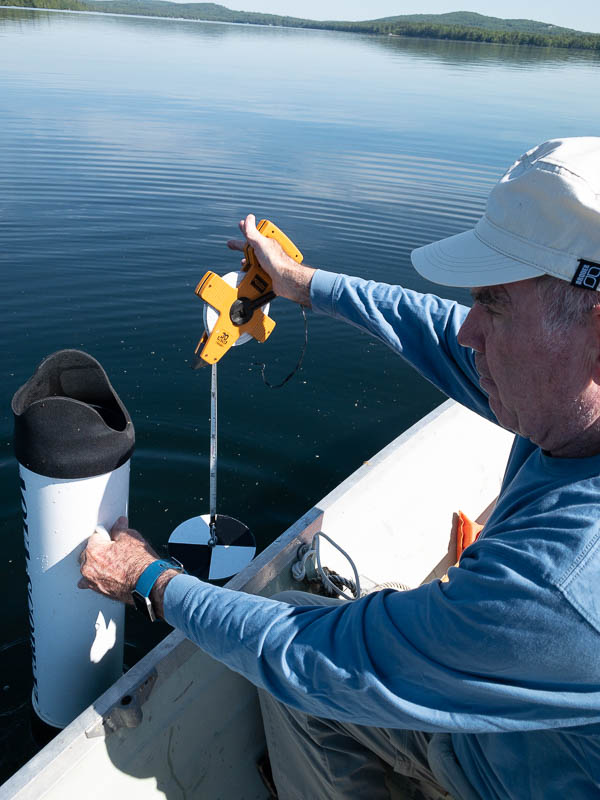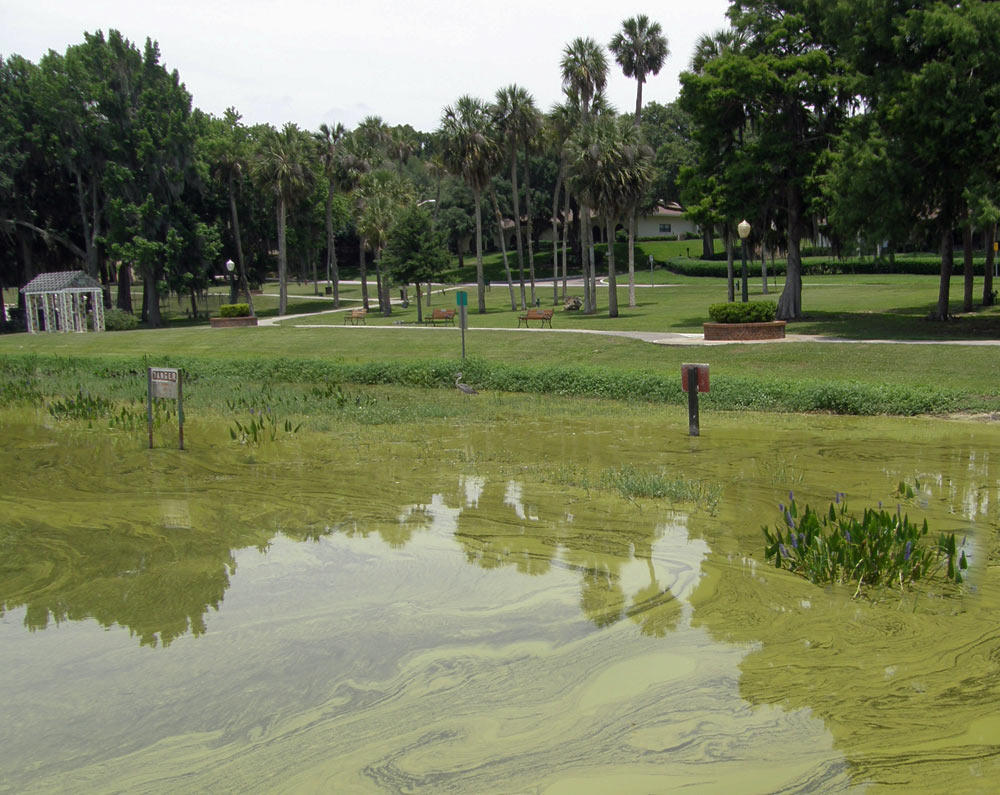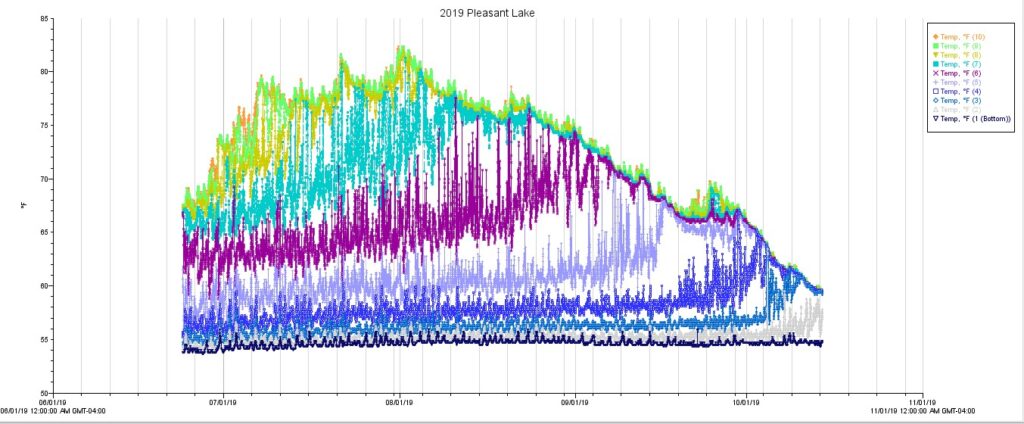Lake Association volunteers employ various methods to monitor Pleasant Lake’s water quality including Secchi disk readings, dissolved oxygen (DO) testing, water column temperature logging, and phosphate testing. We report the data we collect to
Secchi Disk Readings
The North American Lake Management Society explains
A Secchi disk is an 8-inch (20 cm) disk with alternating black and white quadrants. It is lowered into the water of a lake until it can no longer be seen by the observer. This depth of disappearance, called the Secchi depth, is a measure of the transparency of the water.
https://www.nalms.org/secchidipin/monitoring-methods/the-secchi-disk/what-is-a-secchi-disk/
The Secchi disk, attached to a tape measure, is lowered over the side of a boat and observed through a hand-held viewscope lowered just below the water surface. The scope—think of a glass-bottomed boat—allows monitoring without interference from refracted light and solar glare. The monitor slowly lowers the disc until it disappears entirely from sight, and notes the depth at which it disappeared. Noting exactly the depth at which the disc disappears is inherently imprecise, but practice helps a monitor approach consistency from reading to reading. If you’d like to see what it’s like, Lake Stewards of Maine provides a Secchi simulator on its website. Readings are done at the PL/PPA buoy, anchored at Pleasant Lake’s greatest depth of 62 feet.
Multiple factors affect water transparency. Some, such as solar glare or angle of sunlight, have no bearing on water quality. Of concern are factors such as sediment, erosion runoff, and algae growth. Measuring Secchi depth every two weeks during late spring, summer, and early fall flags reduced transparency and signals potential problems. This simple measurement, which varies monthly and yearly, is highly correlated with water quality and thus the health of the lake. Fortunately Pleasant Lake has ranked high over time—we often report transparency at depths over nine meters.
Secchi disk monitors report their findings to Lake Stewards of Maine, which maintains statewide Secchi disk readings and provides resources should reduced transparency indicate water quality deterioration.


Dissolved Oxygen Monitoring
Dissolved oxygen (DO) monitoring concerns the relative amount of oxygen dissolved in water of varying temperatures. Lake Association volunteers regularly collect water column temperature and dissolved oxygen readings at the PL/PPA buoy. After ice-out the water temperature varies little from surface to bottom. As spring turns into summer the temperature stratifies, warmer at the surface and colder beneath—a phenomenon familiar to anyone who sticks a toe in the lake, thinks “that’s not too bad,” dives in, and hits colder water lurking below the surface.
Dissolved oxygen is essential for aquatic life. Wind and wave action add oxygen to the lake, but as water temperatures stratify the warm surface water does not mix with and replenish the oxygen in cold deep water. Dissolved oxygen is consumed and depleted as summer progresses. DO monitoring records the seasonal decline in dissolved oxygen throughout the water column. For example, in spring Pleasant Lake’s deepest, coldest water will often hold 70-80% of the maximum dissolved oxygen concentration for a given temperature. In late summer such water will hold as little as 5% of the maximum DO concentration. Low concentrations of dissolved oxygen impact chemical nutrient balances, can seriously affect fish life, and can result in eutrophication.
Eutrophication reduces the clarity of water and underwater light. In eutrophic lakes, algae are starved for light. When algae don’t have enough light they stop producing oxygen and in turn begin consuming oxygen. Moreover, when the large blooms of algae begin to die, bacterial decomposers further deplete the levels of oxygen. As a result, eutrophication can quickly remove much of the oxygen from a lake, leading to an anoxic — and lethal — underwater environment.
https://www.lakescientist.com/eutrophication/
Think of DO monitoring as an early-warning system to prevent this:

Water Column Temperature Logging
Our efforts also include annually installing a buoy which has water column temperature sensors every two meters from the surface to the deepest point. These sensors collect and transmit daily water temperature data from when they are installed in the spring to when they are removed in the fall. This information is provided to Lakes Environmental Association to analyze and compare the health of Pleasant Lake with others in the region.
This graph shows the 2019 water column temperature data.

Thanks to Art LeBlanc for overseeing the water column temperature sensors, gathering and processing their data, and preparing the annual reports.
Reporting
We submit all the data we collect to Lake Stewards of Maine (LSM, formerly known as Volunteer Lake Monitoring Program), an organization that aggregates information collected by citizen scientists from lakes across the state. LSM requires that all volunteers who collect and report Secchi disk and Dissolved Oxygen data complete certification programs before submitting data to it, and requires all such volunteers to be recertified periodically. See LSM’s Training and Certification page for more information.
